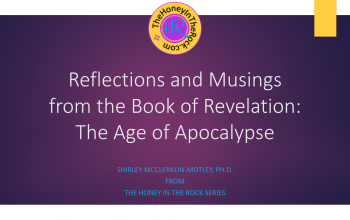A study in the book of Revelation.
In Lesson 4 we begin to discuss the four applications of the messages to the churches in chapters 2 and 3, beginning with the church at Ephesus. Each message was given to seven specific churches of Asia Minor as originally addressed. The messages can also be historically applied. John wrote God’s messages to the seven church around 94-96 A.D., when the Church of Jesus Christ was a little over 60 years old. The church had experienced tremendous growth despite intense persecution. Under the rule of Rome, records show over 45,000 Christians were slain by crucifixion, burned to death, and thrown to wild animals. In addition, corruption was springing up in the Church. When John wrote the messages to the seven churches, many believers were afraid regarding the church’s unsure future. They felt they were not strong enough to stand up to adversities that they would be facing nor could they go through the intense persecution.
Based on historical records, the Church has passed through eras similar to that which is described in each of the seven churches. These same messages can be applied to current churches and future churches, depending upon how long the Lord tarries. These special messages were written to the specific churches in Asia, but the same strengths and weaknesses can be found in today’s ecclesia. Furthermore, the messages given to John can be applied to each of us on an individual basis. We can look at the message for each church during that time and ask ourselves how we personally measure up today. To the early Christians Jesus revealed his end time plan through these messages. Jesus wanted believers to know that He knew exactly where they were. He saw their good works, faithfulness, and patience in the face of persecution. He also saw their compromise, apostasy, indifference, and the fact that some of them were lukewarm. He wanted them to know that he was in the midst of all of their troubles, trials, and tribulations, and that he has all power in his hand to conquer the enemy of the church.


